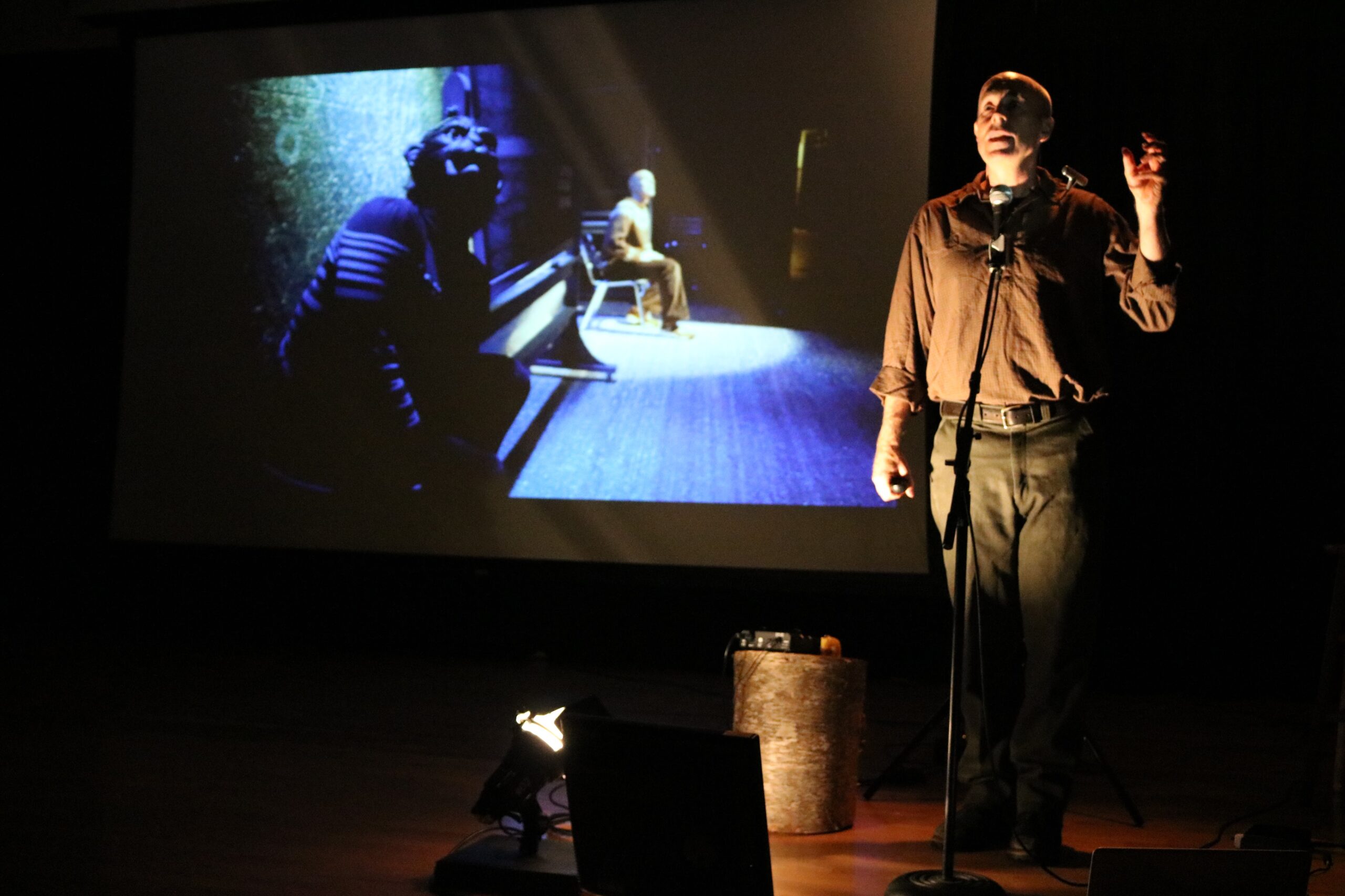Endangered animals from A to Z: Weaver’s ‘Unreliable Bestiary’
September 29, 2017
 Louis Mendez
Louis MendezFrom elephants to monkeys to wolves, Deke Weaver ’85 has set out on a lifelong project to create performances for each letter of the alphabet, with each letter representing a different endangered animal or habitat. On Monday, Weaver came to campus to share the four installments of the series at Kresge Auditorium. The event also featured cinematic documentation and live excerpts from the performances.
The project, titled “Unreliable Bestiary,” is a combination of multimedia performances, a website that includes an online portion and a series of books about natural history. The shows tell stories about the animals and the worlds that they inhabit, as well as our relationships with them.
Different types of media are used in each performance, depending on the animal. His most recent show, “BEAR,” was divided into three segments: fall, winter and spring.
For fall, Weaver presented videos of participants on a walking tour in a nature reserve where they encountered people wearing bear masks. Similarly, the winter segment was also a series of videos, and the spring part was a simulation of a possible future where power has gone out. To end the show, Weaver told a story about a man and a bear with no other presentations.
“Me telling the story with just my voice can do a certain thing, but hearing a voice that’s recorded with video at the same time has got its own thing,” said Weaver on his decision to incorporate multiple forms of media. “[I’m] trying to create an experience weaving all these different temperatures and textures and associations and give people a whole experience.”
“The combining of mediums was really cool,” said Collin Litts ’18 who attended the event. “A lot of it was like immersive theater. I think that combining that all was a really interesting way, and I think [Weaver] did that really productively.”
The event was sponsored by the Departments of Visual Arts and Theater and Dance and was organized by Professor of Art Mark Wethli and Chair and Professor of Theater and Dance Sarah Bay-Cheng. Wethli has known Weaver for over 30 years—Wethli began teaching at Bowdoin while Weaver was the Visual Arts Technician—and Bay-Cheng met Weaver at a conference about a year ago.
Weaver contacted Wethli and Bay-Cheng that he was available to come to Bowdoin during his tour in the northeast, and the two immediately began planning the event.
“Bay-Cheng and I jumped at the chance, knowing that his work had interdisciplinary appeal, including Theater and Dance, Visual Arts and Environmental Studies,” wrote Wethli in an email to the Orient. “As with all of our guest artists, we hope for them to bring in new perspectives and illuminate course topics.”
Weaver created “MONKEY,” the first part of the project, in 2009. Weaver set out to create a production that combined live performance and the natural world. A biology and studio art major at Bowdoin, Weaver credited his liberal arts education for inspiring him to take on such an ambitious project.
“It’s just such a great education,” Weaver said. “And [then there’s the] liberal arts idea of being able to connect the dots between seemingly distant things and finding through your research that things are actually quite interlaced and interconnected.”
Following “MONKEY,” Weaver created “ELEPHANT” and “WOLF,” choosing to focus on “charismatic megafauna”—large animal species with widespread popularity. According to Weaver, audiences are drawn to these types of animals because they exhibit a family life and behavior that people relate closely to.
In addition to choosing specific animals and habitats for every letter, Weaver is also very meticulous in choosing sites for each performance. For example, “ELEPHANT” takes place in The Stock Pavilion, a show area for livestock that is over 30,000 square feet near the University of Illinois at Urbana-Champaign, where Weaver teaches.
“‘ELEPHANT’ was really interesting because it was so overwhelmingly enormous, but there are sections of ‘BEAR’ that were very intimate, and I like both of those ends of the scale, and they worked,” said Weaver.
Looking forward, Weaver is working on the next installment of his project: ‘TIGER.’ The mascot of a high school near where Weaver works is the tiger, so he plans on filming parts of the performance there. Afterwards, Weaver anticipates focusing on a habitat, rather than an animal, for his sixth show.

Comments
Before submitting a comment, please review our comment policy. Some key points from the policy: